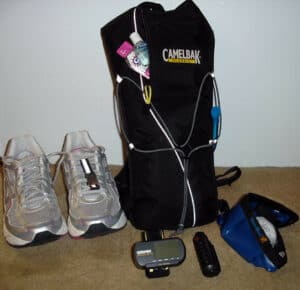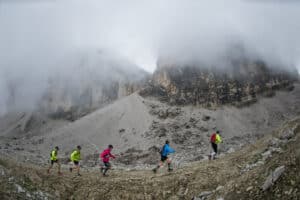When it comes to trail running in different weather conditions, being prepared is key. As a trail runner, I know that the cold weather can present unique challenges and require specific gear to ensure a comfortable and safe run. One essential piece of equipment is the right pair of cold weather running shoes. These specialized shoes provide insulation and traction for slick surfaces, keeping me stable and confident on the trails.
Trail Running in Different Weather Conditions: Rainy Weather
When it comes to trail running in different weather conditions, we all know that different weather conditions can present unique challenges. One such condition is running in rainy weather. As a trail runner, I’ve had my fair share of runs in the rain, and I’ve learned a few things along the way that I’d like to share with you.
Choose the Right Gear
It’s essential to invest in the proper gear for running in rainy weather. Start with a good pair of waterproof trail running shoes or consider using shoe covers to keep your feet dry and prevent slips on slick surfaces. Opt for moisture-wicking socks made from materials like Merino wool to keep your feet warm even when wet.

Layer Up
Dressing appropriately is crucial when running in cold and wet conditions. Layering allows you to regulate your body temperature effectively during the run. Wear a base layer that wicks sweat away from your skin, followed by a mid-layer for insulation, and top it off with a waterproof jacket as an outer layer for protection against rain and wind.
-
- Layer Up: Start with a moisture-wicking base layer to regulate temperature and prevent sweat buildup. Follow it up with a mid-layer for insulation, and top it off with a waterproof jacket or outer layer to shield against wind and snow.
- Cover Your Extremities: Don’t forget about your extremities! Wear gloves or mittens to protect your hands from frostbite, opt for merino wool socks that keep your feet warm even when wet, and consider wearing a hat or headband to retain body heat.
- Protect Your Essentials: To ensure a comfortable run, take precautions to keep your belongings dry. Consider using a waterproof pack or investing in a water-resistant phone case for those rainy days on the trails.
Safety Precautions
When trail running in cold conditions, it’s essential to prioritize safety. Here are a few precautions you should take:

- Be Mindful of Hypothermia: Dressing appropriately and monitoring your body temperature is crucial to avoid hypothermia. Pay attention to signs such as shivering, numbness, or confusion.
- Protect Your Skin: Even on cloudy days, harmful UV rays can still penetrate through. Apply sunscreen with adequate SPF and consider wearing a hat or sunglasses for sun protection.
- Tell Someone Your Plans: Before heading out on a cold weather trail run, let someone know your planned route and estimated time of return.
Running in rainy weather can be a refreshing and exhilarating experience, but it requires some extra preparation. By choosing the right gear, layering appropriately, and being mindful of your footing, you can embrace the elements and enjoy your trail runs in any weather condition.
Remember, trail running in different weather conditions, safety should always come first. If conditions become too extreme or dangerous, don’t hesitate to postpone your run for another day. Stay warm, stay dry, and happy trail running!
Trail Running in Different Weather Conditions: Hot Weather
Trail running in different weather conditions, adapting to different weather conditions is essential for a successful and enjoyable experience. One of the challenges that many trail runners face is running in hot weather. The scorching sun and high temperatures can take a toll on your body and performance if you’re not prepared. Here are some tips to help you conquer those hot trails:
- Stay Hydrated: Hydration is key when running in hot weather. Make sure to drink plenty of water before, during, and after your run to prevent dehydration. Carry a water bottle or hydration pack with you and sip regularly to maintain proper hydration levels.
- Dress Appropriately: Choose lightweight, breathable fabrics for your running attire. Opt for moisture-wicking materials that will help keep you cool and dry as you sweat. Wearing a moisture-wicking t-shirt or tank top paired with running shorts can provide comfort and maximum airflow.

- Protect Yourself from the Sun: Don’t forget about sun protection! Apply sunscreen with at least SPF 30 on exposed skin areas, including your face, arms, legs, and neck. Wear a hat or visor to shield your face from direct sunlight and consider wearing sunglasses to protect your eyes.
- Adjust Your Pace: Running in hot weather requires adjusting your pace accordingly. It’s important not to push yourself too hard, as the heat can increase fatigue and potentially lead to heat-related illnesses like heat exhaustion or heatstroke. Listen to your body and slow down if needed.
- Plan Your Route Wisely: Choose shaded trails whenever possible or plan your runs during cooler times of the day – early mornings or late evenings – when temperatures tend to be lower.
- Stay Cool During Your Run: To regulate body temperature while running in hot weather, try pouring cold water over your head or using ice packs wrapped in towels around your neck or wrists during breaks.
Remember that everyone’s tolerance to heat varies, so it’s crucial to listen to your body and adjust accordingly. Stay safe, stay hydrated, and enjoy your trail running in different weather conditions. Happy running!
